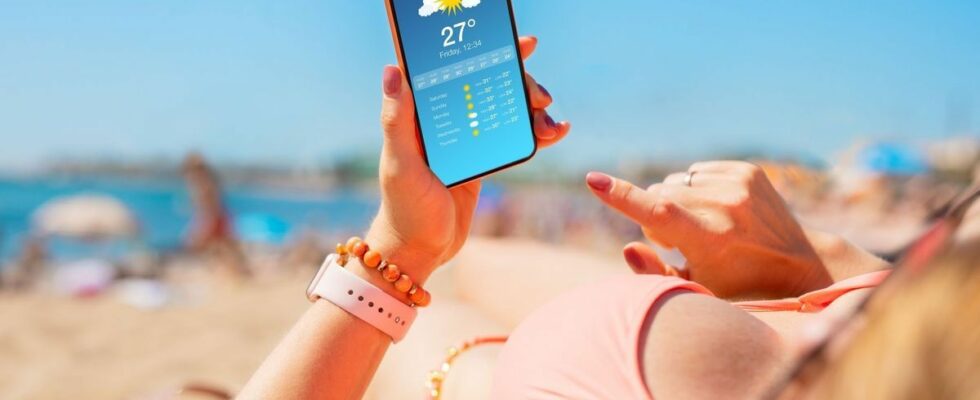Published on
Updated
Reading 2 min.
Between the heat, the sand and the sea water, summer is a relatively dangerous season for your smartphone. So you should be vigilant so that it can reach the fall without damage.
Beware of the sun…
Faced with high temperatures, there is a chance that your smartphone will heat up dangerously. To avoid the risk of overheating, which could damage the terminal, it is absolutely necessary to avoid exposing your smartphone to the sun for too long. To cool it down quickly, simply place it in the shade for a few minutes, in a cool place, by temporarily removing its protective case. You can possibly place it near a fan but definitely not in the refrigerator. In a car, during very hot weather, place your phone preferably in the glove compartment rather than on a seat or near the windshield.
Generally speaking, it is better to deactivate Wi-Fi, Bluetooth or GPS when you do not need them, to avoid heating up the battery. If all else fails, simply turn off and then turn your smartphone back on a few minutes later to return it to a normal temperature. Fortunately, most models now turn off automatically when they exceed a certain temperature. Finally, to recharge your smartphone, it is also advisable to choose a place in the shade.
… in the sand…
On the beach, using a smartphone is strongly discouraged. Sand is dangerous for many reasons. Large grains will tend to scratch your screen quite easily, while smaller ones can get into the ports and cause damage to the inside of the device. Before using your smartphone, remember to equip it with a case and a protective film on the screen. When you are no longer using it, place it in a waterproof pouch, such as a freezer bag with a zip closure. If the smartphone has been in contact with sand or sea water, remember to rinse it with fresh water, using a soft cloth.
…and to the water!
Finally, if it falls into water, beware of the wrong reflex: do not immerse your smartphone in rice. Just like with sand, small particles could indeed get into the device and then damage it. It is better to turn off the device immediately and then place it in a place that is both dry and well ventilated. You can then start to tap it gently, with the connector down, in order to evacuate most of the infiltrated water. You can also wipe it with a paper towel or a soft cloth, taking care not to insert any foreign object (paper, fabric) into the connector. Above all, never use a hair dryer or a microwave oven to remove the last traces of moisture.
